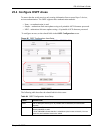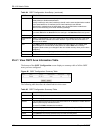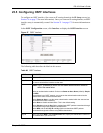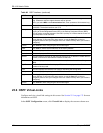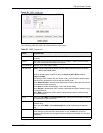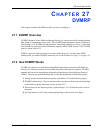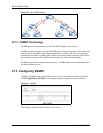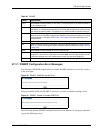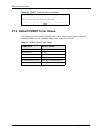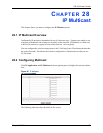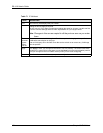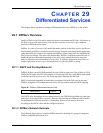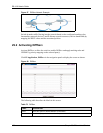
ES-4124 User’s Guide
Chapter 27 DVMRP 189
CHAPTER 27
DVMRP
This chapter introduces DVMRP and tells you how to configure it.
27.1 DVMRP Overview
DVMRP (Distance Vector Multicast Routing Protocol) is a protocol used for routing multicast
data within an autonomous system (AS). This DVMRP implementation is based on draft-ietf-
idmr-dvmrp-v3-10. DVMRP provides multicast forwarding capability to a layer 3 switch that
runs both the IPv4 protocol (with IP Multicast support) and the IGMP protocol. The DVMRP
metric is a hop count of 32.
IGMP is a protocol used for joining or leaving a multicast group. You must have IGMP
enabled when you enable DVMRP; otherwise you see the screen as in Figure 92 on page 191.
27.2 How DVMRP Works
DVMRP uses the Reverse Path Multicasting (RPM) algorithm to generate an IP Multicast
delivery tree. Multicast packets are forwarded along these multicast tree branches. DVMRP
dynamically learns host membership information using Internet Group Multicast Protocol
(IGMP). The trees are updated dynamically to track the membership of individual groups.
1 Initially an advertisement multicast packet is broadcast (“B” in the following figure).
2 DVMRP-enabled Layer 3 devices that do not have any hosts in their networks that belong
to this multicast group send back a prune message (“P”).
3 If hosts later join the multicast group, a graft message (“G”) to undo the prune is sent to
the parent.
4 The final multicast (“M”) after pruning and grafting is shown in the next figure.



